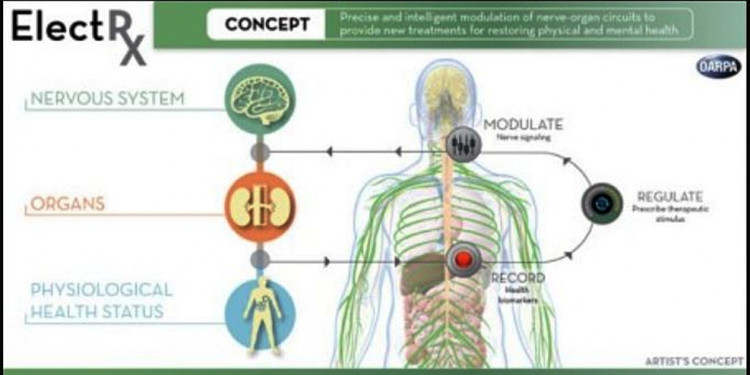The United States is adamantly pushing forward with a new and revolutionary technology that might one day cure diabetes without the need for taking or injecting medicines.
Far-fetched as this may sound, this technology is a public-private effort being led by two well-known American institutions: the U.S. Defense Advanced Research Projects Agency (DARPA) and GE Global Research, a subsidiary of General Electric based in New York.
The joint effort between DARPA and GE Global Research is meant to advance a revolutionary program called "Electronic Prescriptions" or ElectRX aimed at treating diabetes and other susceptible diseases without the need for medicines.
Begun three years ago, ElectRX is a DARPA program looking to develop technologies that will stimulate our body's central nervous system (CNS) so it can heal the human body. ElectRX basically wants to goad the body into trying to treat diseases that can be affected by a stronger CNS.
The breakthroughs sought by DARPA and GE will readjust body metabolism and reduce or eliminate the need for medication. This result is achieved through a decades-old therapy called "neuromodulation." In appropriate patients, neuromodulation can help restore function or relieve symptoms with a neurological basis.
In wide use since in the 1980s, neuromodulation (or therapeutic neuromodulation) is defined as "the alteration of nerve activity through targeted delivery of a stimulus, such as electrical stimulation or chemical agents, to specific neurological sites in the body," by the International Neuromodulation Society.
ElectRX also has military applications. It will be expected to reduce the time, logistical challenges and side effects of traditional medical treatments for a wide range of physical and mental conditions commonly faced by troops in combat.
For American soldiers, ElectRX will seek non-drug treatments for combat conditions such as pain, post-traumatic stress, trauma and, anxiety, among others. It will exploit and expand the key role the CNS already plays in maintaining physical and mental health, especially among troops in battle.
The focus of ElectRX at this point is to develop non-invasive treatment and external stimulation rather than surgical implants. Previous research revealed better results by placing electrodes closer to the problem area, rather than at the neck, which is the location of the main trunk of nerves.
Diabetes is part of the ElectRX program because it's believed to be a particularly good target for bioelectronics. Type 2 diabetes today is being treated for what it is, which too much glucose in the blood. On the other hand, what's causing diabetes isn't being treated. The current operating theory is neuromodulation is the CNS is the root cause of insulin resistance, and can be made to change.
DARPA is interested because blood glucose levels are a direct indicator of trauma patients' recovery, said Victoria Cotero, who is a member of the bioelectronic medical research team at GE Global Research. The higher the blood glucose in a wounded soldier's glucose, the worse his medical complications are likely to be, especially with an infection.
The three-year-long DARPA program is worth up to $2.9 million to GE Global Research, which has a three-year DARPA contract to do the work. GE's goal is to demonstrate a system that will be an effective non-invasive treatment with fewer side effects than drugs.






